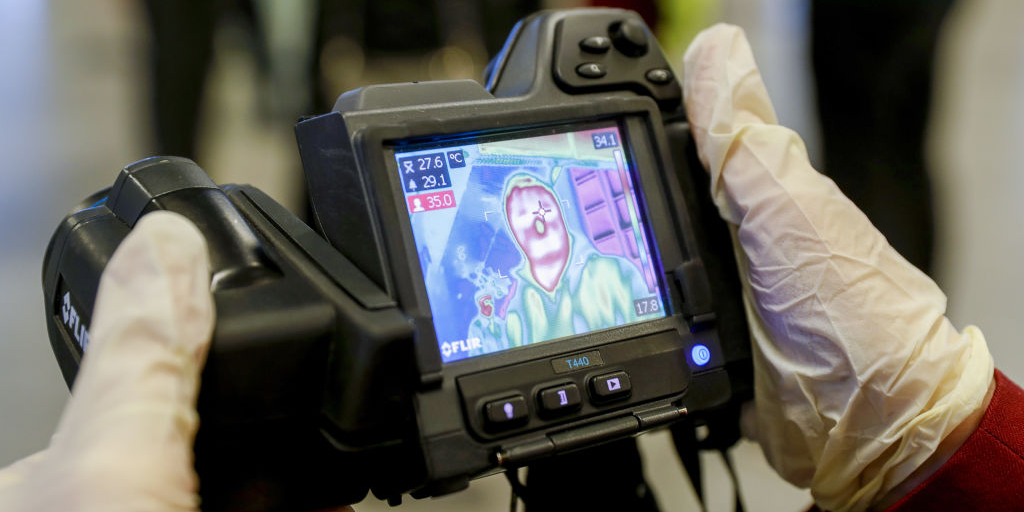- The coronavirus that originated in Wuhan, China, has now been identified in 28 other countries as authorities scramble to contain the outbreak.
- Officials and volunteers at train stations and airports on country borders are at the front lines of screening individuals who could potentially spread the virus.
- Screeners have deployed a wide variety of safety measures including recommending sanitary accessories like gloves and masks, in addition to more advanced technology like thermal imaging.
- Visit Business Insider’s homepage for more stories.
At least 34,000 people have been infected by the Wuhan coronavirus worldwide, and more than 700 people have died in just a few weeks after the outbreak was first identified.
The virus has spread from its origin point in Wuhan, central China, to 28 other countries, sparking the country’s response of putting 16 cities under quarantine, halting transportation, and cutting off nearly 50 million people to try and quell the outbreak.
Authorities have turned to medical tests and hastily built facilities to identify and treat patients, and officials working at train stations and airports are at the front lines of screening individuals who could potentially spread the virus.
Here are some photos of the futuristic-looking measures taking over travel.
After the outbreak was first reported and found to be passed from human to human, authorities recommended basic measures like gloves and face masks to minimize potentially infectious contact.
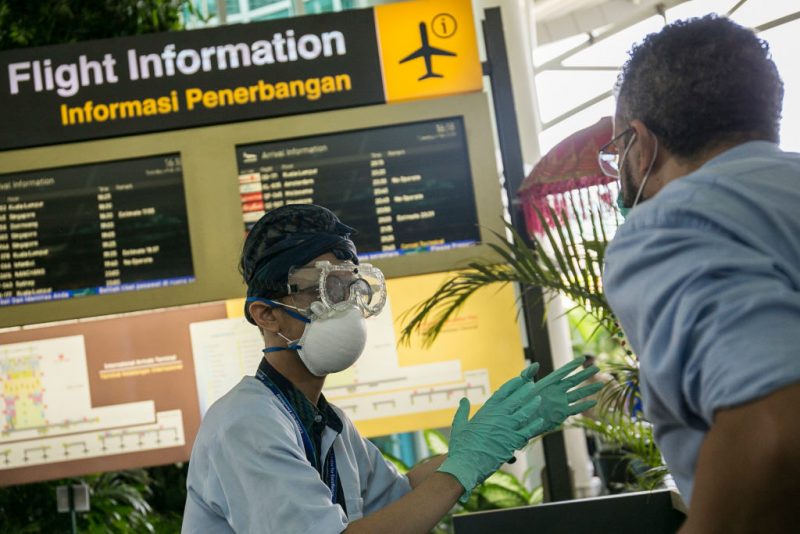
Source: Business Insider
Even hand sanitizer has made an appearance as officials take all possible precautions.
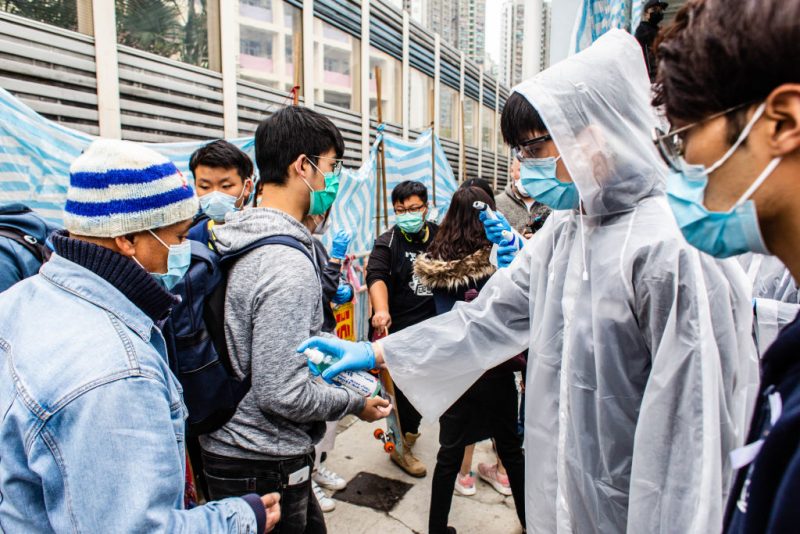
To sanitize large areas in busy travel centers, officials suited up and sprayed airports, railway stations, and even passengers themselves.

Source: Business Insider
The insides of trains and planes are also ripe for disinfecting to cut down on possible transmission of the virus.

Authorities in countries like Indonesia tightened their health checks on arrivals of outsiders, with some taking individual temperatures of passengers specifically coming from China, Hong Kong, and Taiwan.

Source: Time
Volunteers in China have stepped up to take temperatures at high-volume border crossing areas, like here in Tin Shui Wai, a border city in Hong Kong.
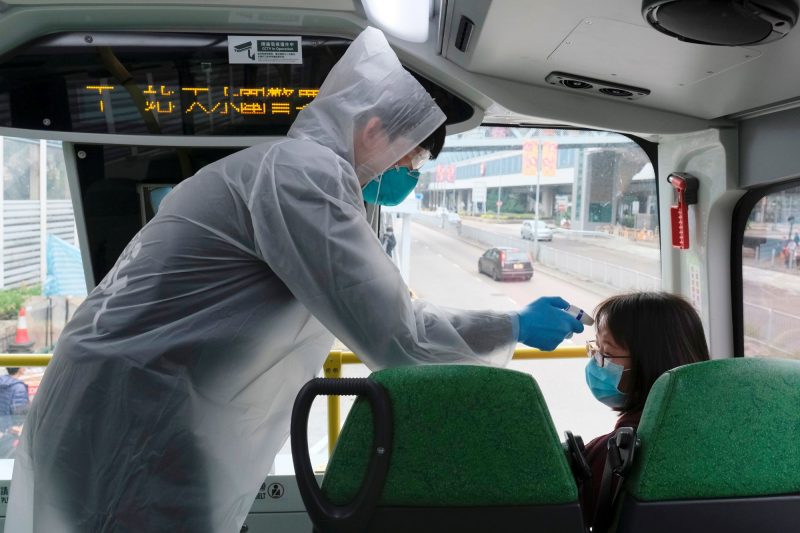
Screening areas at airports also employ thermography tools to monitor large groups of passengers for possible symptoms.
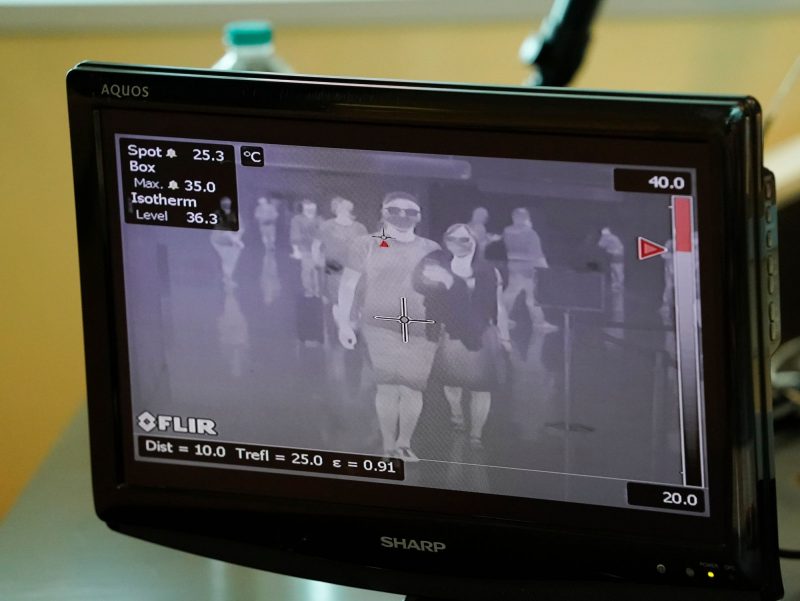
Transit stations aren't the only places where thermal imaging is used to monitor customers. High-volume areas at hotels and casinos also use the technology to monitor crowds.

Handheld thermal imaging devices give authorities a closer look at passengers in a closer range.
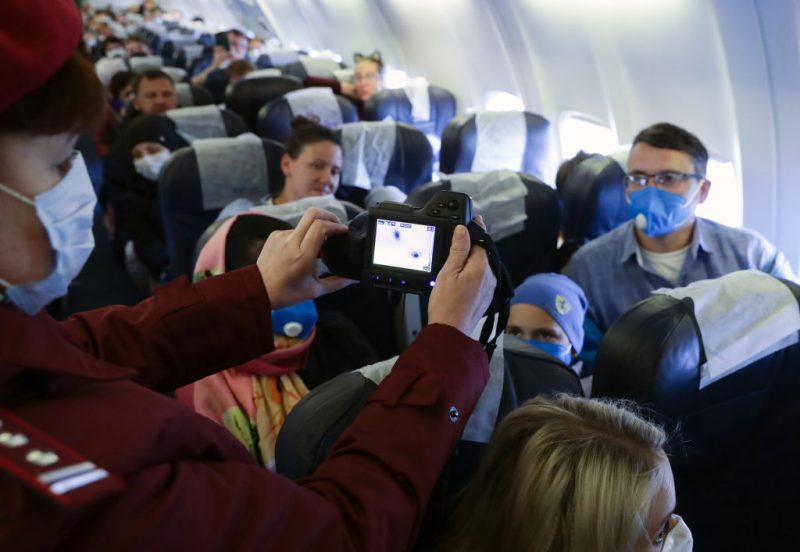
Since one of the key symptoms of the virus is a high fever, thermal imaging provides a quick look at individuals who should be quarantined. Thermal imaging technology was also used in the SARS outbreak, which also saw high fevers.

Source: The Wall Street Journal
The larger screens can process whole groups of people while they travel through a terminal.
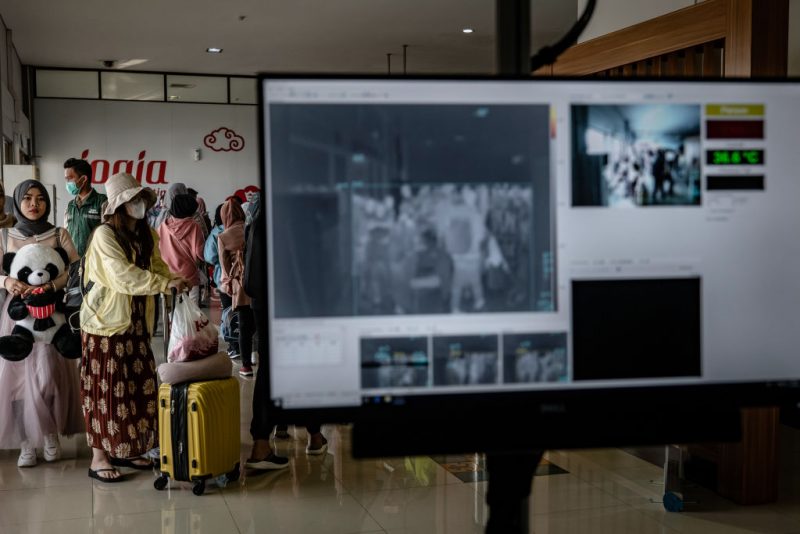
Part of the display shows the identified temperature, which is ideally 37°C, or 98.6°F.
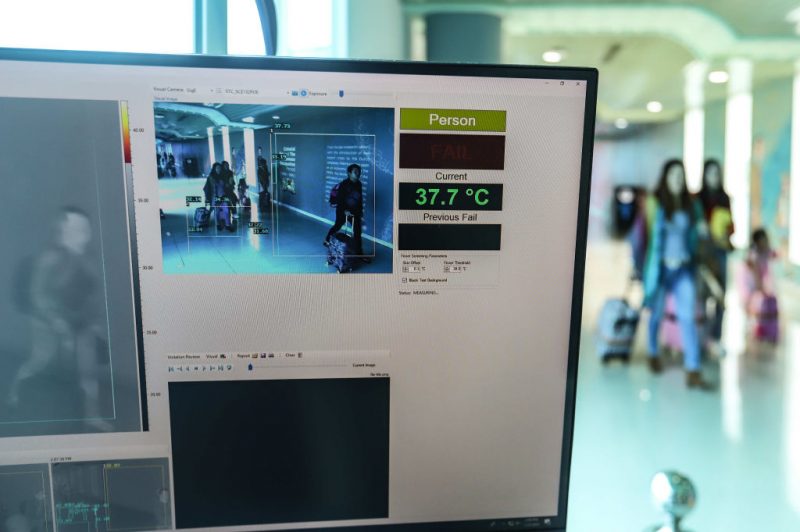
Source: US Library of Medicine
Read more:
Everything you need to know about the coronavirus outbreak in 30 seconds

